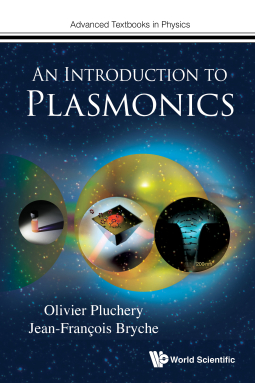An Introduction to Plasmonics
What is a plasmon? Is it a particle, like a photon or a wave? Plasmonics stands at the frontier of condensed matter physics, which is the world of electrons, optics and of photons. Plasmonics is one of the most active fields in nanophotonics.
This book begins by exploring the concepts behind waves, and the electromagnetic description of light when it interacts with metals; it dedicates every chapter thereafter to all aspects of plasmonics. In particular, the surface plasmon polariton wave is explained in full detail, as well as the localized surface plasmon resonance of metallic nanoparticles. The active research area opened by plasmonics, as well as its applications, are also briefly explained, such as advanced biosensing, subwavelength waveguiding, quantum plasmonics, nanoparticle-based cancer therapies, optical nano-antenna and high-efficiency photovoltaic cells.
The book is adapted for graduate students and places a special emphasis on providing complete explanations of the fundamental concepts of plasmonics. Further, each of these concepts is illustrated with examples drawn from the most recent scientific literature. Each chapter ends with a set of exercises that will help the reader revise the concepts and go deeper into the world of plasmonics. More than 70 exercises are included.
About the authors
Jean-François Bryche is CNRS researcher since 2021 at the Laboratoire de Nanotechnologies et Nanosystèmes (LN2, CNRS/Centrale Lyon/INSA Lyon/Université Grenoble Alpes/Université de Sherbrooke), an international research laboratory between France and Canada, at the University of Sherbrooke. His research interests include plasmonics, nanophotonics, surface enhanced Raman scattering, biosensors, near field optics, biophotonics, nanofabrication and thermoplasmonics. He has authored more than 20 research articles.
Olivier Pluchery is currently University Professor of Physics at Sorbonne University in Paris where he has been teaching optics, electromagnetism and plasmonics since 2002. He leads a research group at the Institute for NanoScience in Paris and focuses on the understanding of the singular properties of gold nanoparticles studied at the single objects level: charge transfer induced by molecular layers, conductivity, plasmonic properties. He is the director of the national research network Or-Nano dealing with the many applications of gold nanoparticles. He has authored more than 60 research articles.
